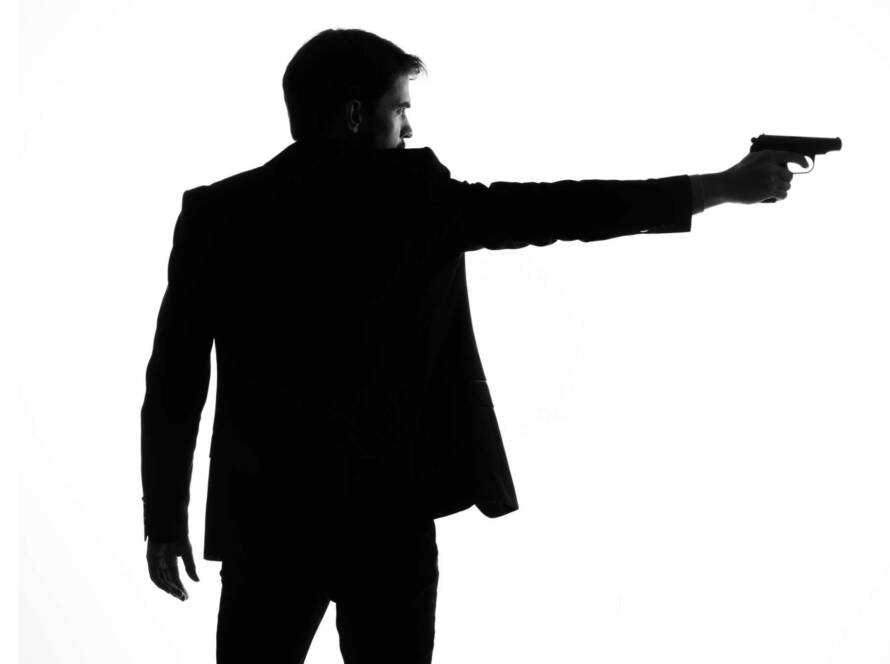Importance of Grip
Grip is arguably the most critical fundamental of marksmanship. Even if other fundamentals aren’t executed perfectly, a solid grip can still result in accurate shots. Conversely, even flawless technique in other areas can be undermined by a poor grip. Regardless of where you’re retrieving your pistol from—be it a nightstand, bench rest, or holster—your grip should always remain consistent, known as the “Master Grip.”
Step-by-Step Guide to the Master Grip
Purchase the Grip
The initial contact between your hand and the pistol grip is termed the “Purchase” because you are effectively “purchasing” real estate on the pistol grip with your hand, establishing control and stability from the outset. The grip you start with is the grip you’re going to have in a gunfight, so it is important this gets off to a good start.


High Grip Position: Your strong hand must grip as high as possible on the pistol. The beavertail of the gun should dig firmly into the webbing of your hand, maximizing recoil control by positioning your hand near the bore axis. By gripping high, you ensure recoil forces act directly against your hand’s strength and mass, significantly enhancing your control and stability.


Middle Finger Knuckle Position: The knuckle of your middle finger should press firmly against the underside of the trigger guard. Getting as high on the grip as possible maximizes recoil management and firearm control.
Gun Orientation in Hand
The gun’s bore axis must be aligned with your forearm:

Mass and Bone Structure Alignment: Proper alignment allows recoil forces to travel directly along your arm, utilizing bone structure and mass for stability. Misalignment directs recoil forces onto your wrist joint, causing instability and discomfort.
Trigger Finger Placement: Correct orientation affects your trigger finger placement. If the gun angles too far right (for a right-handed shooter), the trigger will land in the first knuckle crease, known as “too much trigger finger,” causing unwanted forces and inconsistent groupings. If angled too far left, your fingertip barely reaches the trigger, resulting in poor leverage and disturbing the muzzle during trigger pull.



Proper Trigger Finger Placement
The pad of your index finger should rest flat against the trigger. Your fingernail should be perpendicular to the bore axis, parallel to the target, ensuring a straight rearward trigger pull without lateral pressure. This reduces muzzle disturbance, enabling tight, consistent groups.
Grip Strength (Strong Hand)
Your strong hand grip should be firm, but not overly tight. Excessive gripping can activate excessive sympathetic motion—a neurological phenomenon causing simultaneous thumb movement with the index finger, negatively affecting trigger control and causing unwanted muzzle shifts.
Building the Support Hand Grip
Avoid Flagging: Exercise caution not to point the muzzle at your support hand while building the grip.
Build Grip Close to Chest: Develop the two-handed grip close to your chest, not fully extended, to maximize grip pressure when you extend the gun.

Preferred Method for Support Hand Application
Fingers First Method: Wrap your support hand fingers around the strong hand fingers first, then mate the palms. This method ensures a tight fulcrum with solid friction, enhancing grip effectiveness like packing tape wrapping around a box corner.
Palm First Method (less effective): Tends to leave finger fulcrum loosely engaged, reducing overall grip effectiveness and lever pressure.
The only disadvantage to the fingers-first method is the possibility of incorrect indexing, requiring diligent practice to achieve consistency—a small price for superior grip stability.

Maximizing Friction
Your support hand palm must contact maximum surface area on the grip providing the friction needed to control the weapon. When the gun is properly aligned with your forearm, your fingers should naturally wrap around the grip in such a way that sufficient space remains on the support side of the grip, providing ample surface area for your support hand palm to engage.

Support Hand Nest into Strong Hand & Trigger Guard
Support hand palm should also be tightly nesting with your strong hand. Index the trapezium of your support hand to nest in between the knuckles of your thumb while keeping the support hand as high enough to be pressing up against the trigger guard.
Support Hand Thumb Placement
Your support hand thumb should point forward, resting on the pistol frame’s “gas pedal” just on top of and in front of the trigger guard. Modifying this surface to improve grip friction greatly enhances recoil control, enabling faster shooting. This natural thumb-forward position aids intuitive gun-pointing.
Presenting The Gun
Using Leverage to Increase Pressure

Lever Effect
Your grip creates a class-1 lever similar to a nutcracker, with the fulcrum formed by overlapping fingers at the front of the grip, the pistol grip as the load, and the applied force from the elbows coming together. When you extend your arms your elbows draw closer together during extension, increasing friction and pressure stabilizing the firearm.



Finalizing the Grip
- Strong Hand: Firm but moderate grip pressure to facilitate fast, smooth trigger movement without sympathetic thumb motions or trigger freeze.
- Support Hand: Apply firm, tight grip pressure to effectively control recoil, avoiding excessive tightness that causes muscle tremors.
- Presenting the Gun: As you extend your arms into the firing position, your elbows coming together naturally increases grip pressure. Your hands should envelop the pistol entirely, closing any small gaps between palms.
- Recoil Management: Apply downward thumb pressure on the “gas pedal” and rearward pinky pressure on the grip bottom. Slight forward wrist tension may further enhance stability, though personal results vary and may vary from weapon to weapon.
Mastering these comprehensive grip details ensures maximum control, consistent shot placement, and improved overall shooting performance.
Take Control: Putting It All Together
- Strong Hand Grip:
- High grip position (beavertail firmly in webbing of hand).
- Middle finger knuckle high up firmly against trigger guard.
- Proper alignment of bore axis with forearm.
- Avoid angling pistol to the right (“too much trigger finger”).
- Avoid angling pistol to the left (“too little trigger finger”).
- Trigger finger pad flat on trigger (plane of fingernail perpendicular to bore axis).
- Firm grip, but not overly tight (avoid sympathetic thumb movement or trigger freeze).
- Building the Support Hand Grip:
- Avoid flagging your support hand with the muzzle.
- Establish grip close to the chest, not at full extension.
- Create a class-1 lever (fulcrum formed by overlapping fingers).
- Maximize friction and grip pressure by nesting fingers tightly.
- Use trapezium bones as indexing point for consistency.
- Preferred support hand method: fingers first, then palm (wrap method).
- Thumb pointed forward, resting firmly on frame’s “gas pedal.”
- Finalizing Grip and Presentation:
- Strong hand maintains moderate, firm pressure for smooth trigger operation.
- Support hand applies firm, tight pressure to control recoil without muscle tremors.
- Increase grip pressure naturally by bringing elbows together during gun presentation.
- Ensure palms close any gaps when fully extended.
- Apply thumb pressure on the gas pedal and rearward pinky pressure on grip base.
- Consider slight forward wrist tension for enhanced stability (results may vary).
Next Steps: Master Your Grip in Action
This article covers the fundamentals of establishing a proper handgun grip, detailing the crucial steps and techniques for maximum accuracy and recoil control. For an in-depth exploration into the science and physics behind optimal handgun operation, join our handgun mastery class. Through live demonstrations, hands-on experiments, and personalized guidance from expert instructors, you’ll discover precisely why this grip method is unmatched. Sign up today and master the art of handgun shooting.


